Part of a series of articles titled Condition of Selected Natural Resources at Mesa Verde National Park: A 2025 Assessment.
Article
Condition of Selected Natural Resources at Mesa Verde National Park: A 2025 Assessment
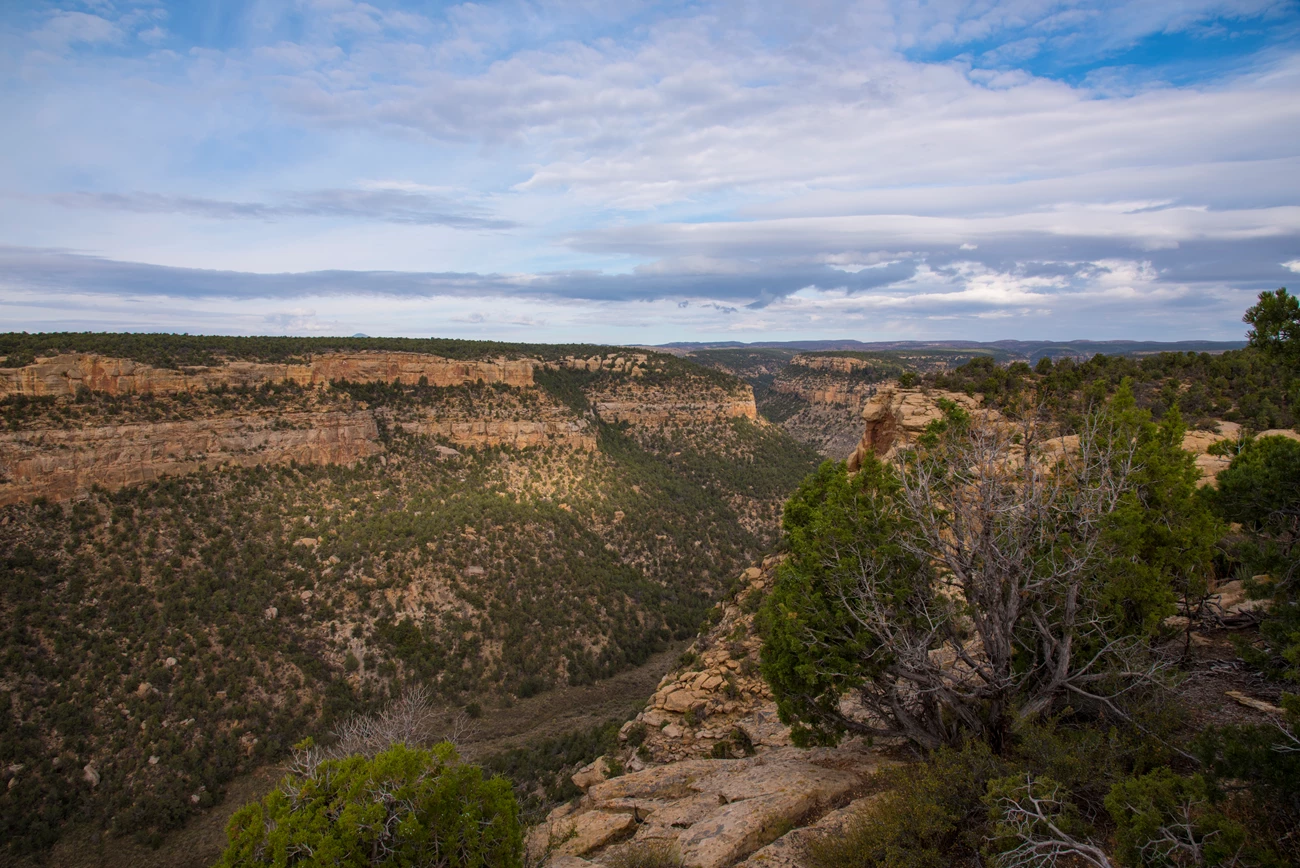
NPS
America’s National Parks protect abundant and diverse natural resources. The enjoyment of seeing wildlife in their natural habitat, hearing birds singing or elk bugling, and viewing beautiful scenery or historic structures draws millions of visitors to our parks every year. These natural resources are parts of complex ecosystems, and they interact with other plants and animals and their environment.
Park natural resources respond to both natural and human-made drivers and stressors, such as fire, upstream uses and impacts, invasive and problematic species, and climate change. These drivers and stressors vary by resource. Understanding the condition of park natural resources, as well as how and why they are changing over time, is vital for managing and protecting these resources.
Natural Resource Condition Assessment (NRCA) projects, such as the study described here, are designed to provide an efficient, scientifically based update on current conditions, and to identify drivers and stressors and critical data gaps, for a subset of park natural resources. This project, finalized in 2025, focused on Mesa Verde National Park in southwestern Colorado.
Introducing Mesa Verde National Park
The land within Mesa Verde National Park (NP) was inhabited by Ancestral Puebloan people from approximately 550 to 1300 CE. It was the first national park preserved for its cultural values (in 1906), although it also has significant natural resources. Over 70 species of mammals, 200 species of birds, and 1,000 species of insects and other invertebrates can be found in the park. Mesa Verde NP also has a relatively high diversity of plants—640 species, including four known endemic species (species that occur naturally in only a specific geographic area). Mesa Verde’s upland plant communities vary by elevation and include shrub-steppe dominated by sagebrush (Artemesia spp.), pinyon pine (Pinus edulis) and juniper (Juniperus osteosperma) (PJ) woodland, Douglas fir (Pseudotsuga menziesii) forest, and ponderosa pine (Pinus ponderosa) forest. The Mancos River and seeps and springs scattered across the otherwise arid landscape provide unique and ecologically vital habitats.
Focusing on a Subset of Resources at Mesa Verde
Managers at Mesa Verde NP selected six resources to study in their NRCA:
- Birds: raptors, passerines, and hummingbirds
- Ungulates: elk and mule deer
- Rare plants
- Springs and seeps
- Mancos River
- Upland vegetation
The NRCA team, led by NPS partners from Conservation Science Partners, evaluated each of these resources as either a condition assessment or a gap analysis. The type of analysis depended on data availability. A condition assessment is a more thorough evaluation of a resource’s current condition, and a gap analysis highlights what we know and don’t know about a resource.
Birds: Raptors, Passerines, and Hummingbirds
The variety of habitat types within Mesa Verde NP enables many bird species to breed and/or reside within the park. Researchers detected 82 different bird species during surveys in the park between 2008 and 2022 (Reese et al. 2023), and even more have been detected by the NPS Southern Colorado Plateau Network. Birds that breed within the park include raptors (birds of prey), passerines, and hummingbirds. For the NRCA, the team carried out a gap analysis for raptors and condition assessments for passerines and hummingbirds.
Three species were the focus of the raptor gap analysis—the golden eagle (Aquila chrysaetos), peregrine falcon (Falco peregrinus), and Mexican spotted owl (Strix occidentalis lucida, pictured here). Passerines are perching birds and include all songbirds. Of the 82 bird species detected in the park between 2008 and 2022, 63 species were passerines (Reese et al. 2023). To assess hummingbirds, the NRCA team focused on the two hummingbird species that breed in Mesa Verde—black-chinned hummingbird (Archilochus alexandri) and broad-tailed hummingbird (Selasphorus platycercus). These beautiful little birds weigh just 0.1 to 0.2 ounces (Cornell Lab 2025)—less than the weight of a marshmallow (Vanover 2022)!
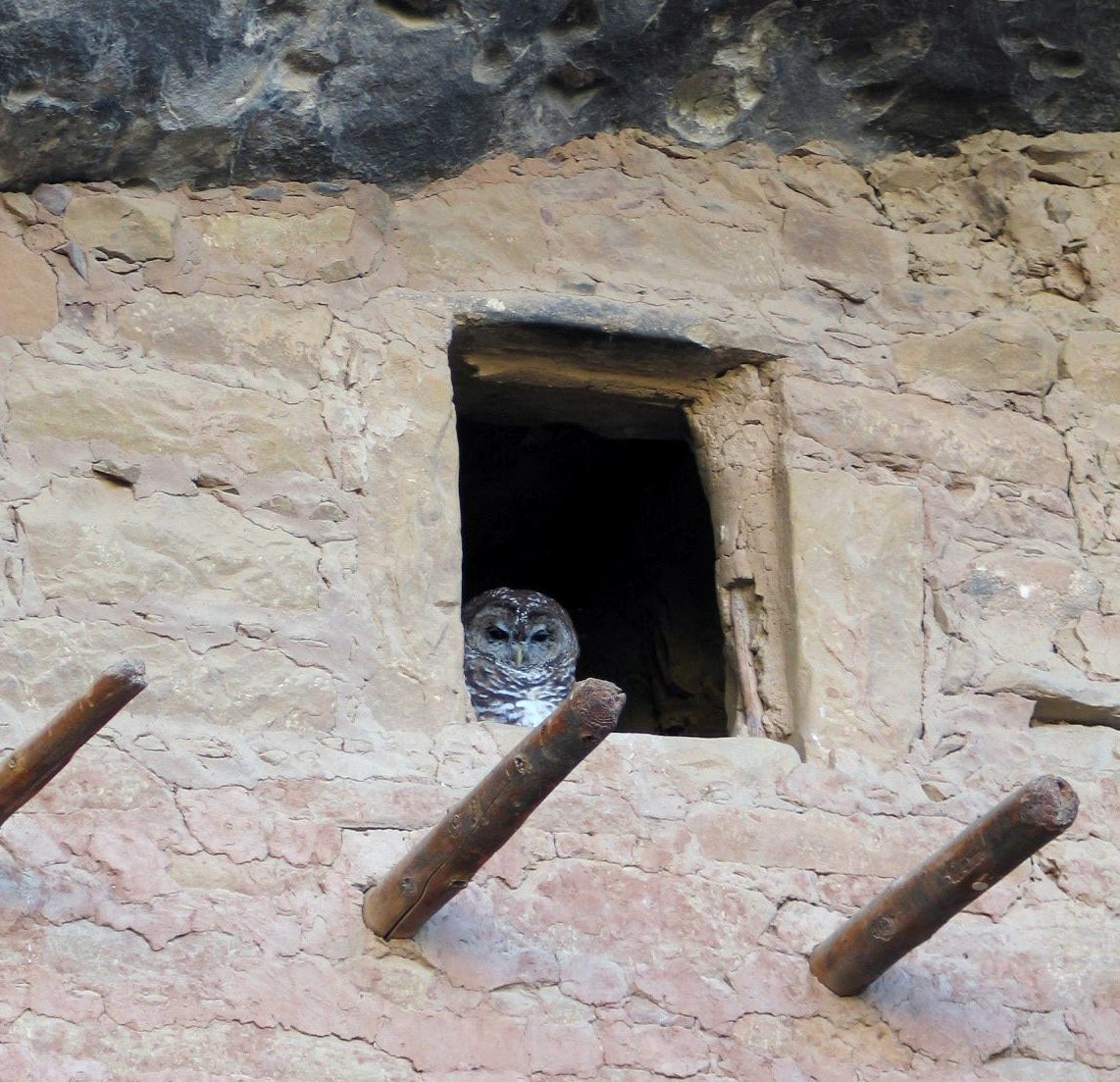
NPS / K Barnett
We hope we’ve piqued your interest in birds at Mesa Verde National Park. Follow this link to get the full story.
Ungulates: Elk and Mule Deer
Mesa Verde hosts two types of ungulates (hooved animals)—elk (Cervus elaphus) and mule deer (Odocoileus hemionus). Both species occur across the park and can be found in all habitat types. Elk may migrate between alpine habitats during the summer/early fall, and lower elevation pinyon-juniper (PJ) and sagebrush habitats during the winter, depending on weather conditions. Using data from the Colorado Parks and Wildlife, the NRCA team conducted a gap analysis for Mesa Verde’s elk and mule deer to determine general population trends for herds that use the park.
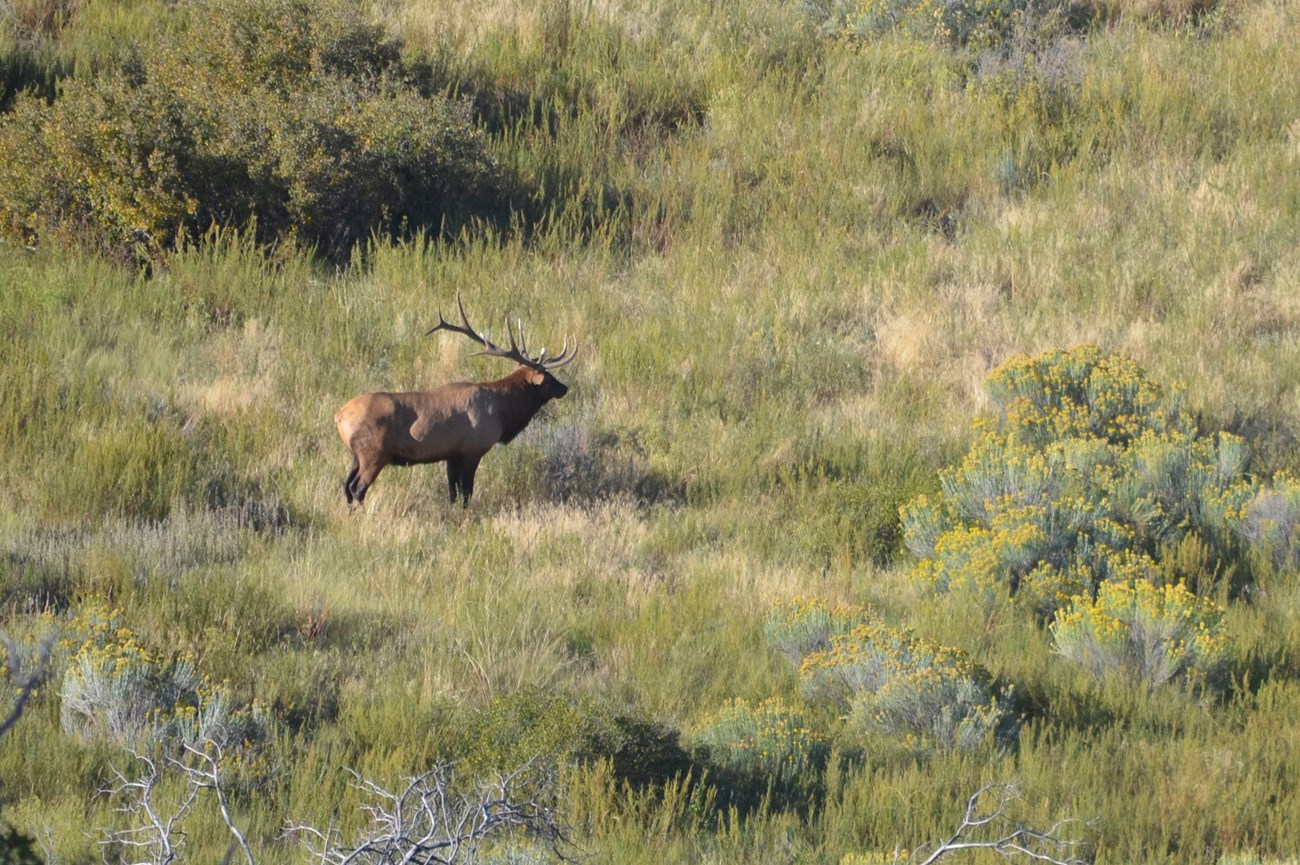
NPS
To learn more about elk and mule deer in Mesa Verde NP, follow this link.
Rare Plants
Mesa Verde NP is one of eight hotspots in Colorado for rare and endemic plants (Rondeau et al. 2011). There are currently 14 rare native plants of conservation concern in the park. One of these plants is Cliff Palace milkvetch. It grows only in association with the white zone of the Upper Cliff House Sandstone at the south rim of Mesa Verde NP (Center for Plant Conservation [CPC] 2020). Cliff Palace milkvetch is a very small plant, usually less than 2 inches (5 cm) long, that produces small, cream-colored flowers in May (CPC 2020). Another of the rare plants is Chapin Mesa milkvetch. This plant grows in dense, old growth pinyon-juniper woodlands between 6,500 and 7,500 feet (about 1,980 and 2,290 m) on Chapin Mesa and Park Mesa (Rondeau 2020). The plant produces showy white flowers (loved by bees) in late May. Chapin Mesa milkvetch has been the most-monitored rare plant in the park.
For the NRCA, the NRCA team assessed rare plants by conducting:
- a gap analysis for the 14 rare plants,
- a gap analysis for Cliff Palace milkvetch (Astragalus deterior), and
- a condition assessment for Chapin Mesa milkvetch (Astragalus schmolliae).

Colorado Natural Heritage Program / Renee Rondeau
Follow this link to get the full story on these rare plants at Mesa Verde.
Springs and Seeps
Springs in Mesa Verde NP are fed by the park’s aquifers and are typically small, with average flow less than 0.8 cups per second (0.2 liters per second). Springs are perennial sources of water where groundwater reaches the land surface. In contrast, seeps are features where the groundwater does not always reach the surface. These features provide essential water, food resources, and habitat for wildlife, and they are important oases of biodiversity in desert landscapes.
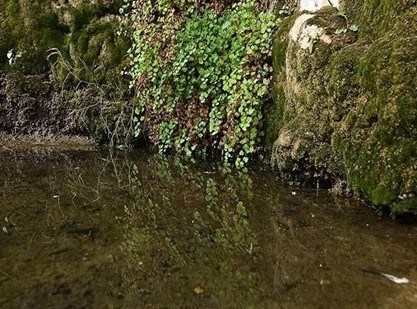
NPS
For the seeps and springs gap analysis, the NRCA team used a long-term dataset from park biologists that contained information on 265 springs and seeps within Mesa Verde. The team looked at four different aspects of these features—the average annual spring-season flow rates, the average annual pool volumes (meaning the dimensions of a spring pool), the number of springs that were within 33 feet (10 m) of a road or hiking trail (the smallest distance to protect the spring), and the degree to which feral livestock were present at park springs and seeps.
Follow this link to find out what the NRCA team learned about springs and seeps.
Mancos River
The Mancos River, a tributary to the San Juan River, flows south through about 5 miles (8 km) of eastern Mesa Verde NP. The river and its riparian forest corridor provide unique habitat for many species in the park and offer other important ecological functions; these include the reduction of stream temperatures and cover for fish. Riparian plant communities range from wet meadows to deciduous forests. Based on regular surveys of fish in the river over at least 50 years, 21 fish species are present or occurred in the river in the past (NPS 2024). Of these, seven species are native.
The assessment for Mesa Verde’s stretch of the Mancos River consisted of separate condition assessments for:
- water quality
- macroinvertebrates
- fish and aquatic habitat
- the riparian corridor.
Good water quality is important for aquatic and terrestrial life, including humans. The NRCA team used three indicators for the condition assessment of water quality: inorganic/non-mineral water quality indicators, nutrient indicators, and trace metal and mineral indicators.
Aquatic macroinvertebrates are small organisms that lack a backbone and live all or part of their lives in water. Understanding the condition of macroinvertebrates provides important information on the health and integrity of the freshwater ecosystems in which they live. The NRCA team used four indicators of condition for the macroinvertebrate assessment. These are flow (or stream discharge) trends, relative abundance of pollution-tolerant versus intolerant groups of macroinvertebrates, trends in Trichoptera (caddisflies) abundance, and percentage of samples that meet Colorado’s water quality attainment standards.
Biologists have surveyed fish in the Mancos River within Mesa Verde NP for more than 50 years. The NRCA team used three indicators of condition for the assessment of fish and aquatic habitat: fish counts and abundances over time, fish habitat quality, and river flow.
To assess the condition of the Mancos River riparian corridor within Mesa Verde NP, the NRCA team used three indicators: riparian vegetation health and function, riparian structure and wildlife habitat, and fluvial geomorphology (defined in the Mancos River article).
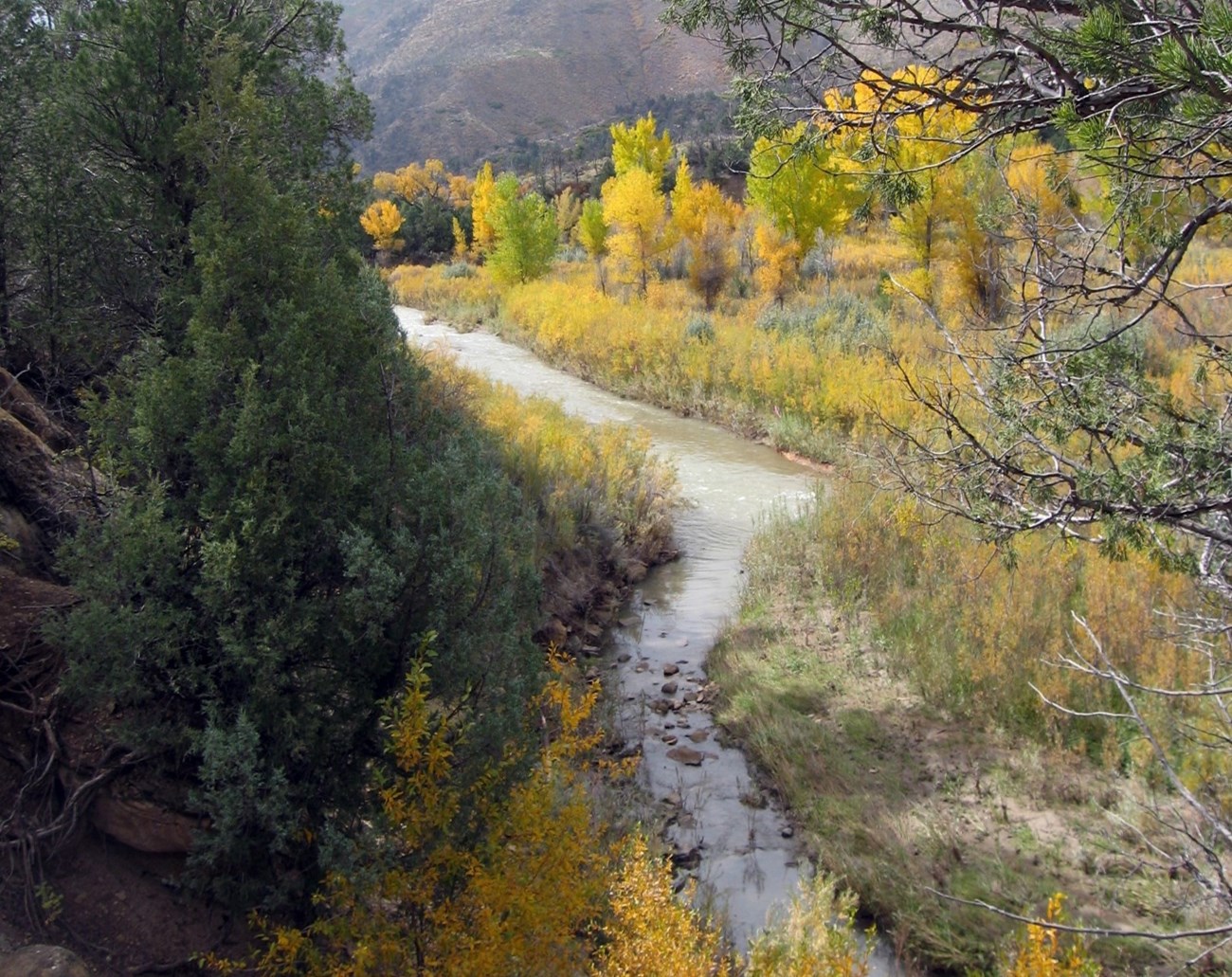
NPS / Southern Colorado Plateau Network
Get the Mancos River assessment results by reading the full article, which even includes mention of beavers!
Upland Vegetation
Mesa Verde NP has a number of upland vegetation types, including (but not limited to) pinyon-juniper (PJ) woodlands, mountain shrubland, and shrub-steppe communities. Fire has played an important role in shaping the plant communities of Mesa Verde, especially within PJ woodlands. The park’s PJ woodlands consist of two-needle pinyon pine (Pinus edulis) and Utah juniper (Juniperus osteosperma). They occur on most mesas and upper canyon slopes up to about 7,875 feet (2,400 m) in elevation (Thomas et al. 2009). The PJ woodlands in Mesa Verde include remnant old growth stands that are 300 to 500 years old (Turner et al. 2007), with some individual trees more than 500 years old (Floyd et al. 2003).
Mountain shrubland in Mesa Verde is distinguished by the prevalence of Gambel oak (Quercus gambelii), although other shrubland species may co-dominate (Thomas et al. 2009). Mountain shrubland occurs between elevations of about 6,890 and 8,572 feet (2,100 and 2,600 m) and where soils are deep and well developed. The shrub-steppe community is dominated by big sagebrush (Artemisia tridentata), which occurs at lower elevations in many of the canyon bottoms, in some areas where fire has removed PJ canopy, and in the mountain shrubland-PJ woodland ecotone (Thomas et al. 2009).
To assess the upland vegetation at Mesa Verde, the NRCA team used a gap analysis for upland vegetation in general, and a separate condition assessment focused on pinyon-juniper (PJ) woodlands. For the PJ condition assessment, the NRCA team used seven indicators of condition: shrub cover, perennial grass cover, annual grass cover, forb cover, species richness, PJ canopy cover, and pinyon seedling recruitment.
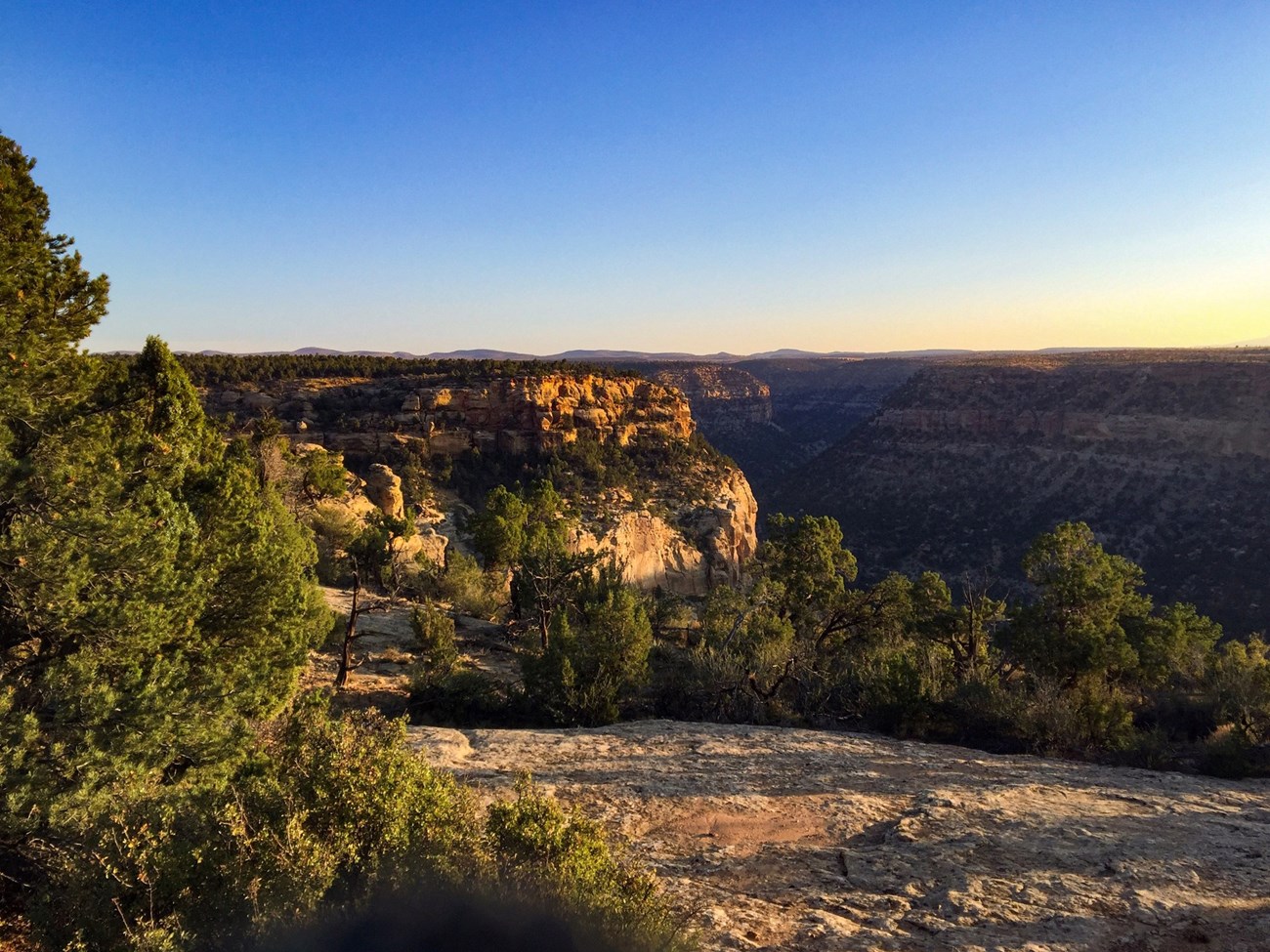
NPS
Find out how PJ and other upland vegetation communities are doing by following this link.
Using what we Learned to take Action
Knowing the condition of these resources and what information is lacking is only the first step. We also need to link the study findings to actions park managers can take to better conserve the resources. For this purpose, the NRCA team developed management considerations for each focal resource as possible next steps. Here are a few of the considerations for Mesa Verde NP. See the full articles in this series for more.
-
Prioritize maintaining or enhancing native deciduous plant cover in areas where PJ woodlands may not naturally regenerate after fire. NRCA findings show that the park’s post-fire landscape supports a range of bird species responses after fire, especially in areas where native deciduous vegetation has increased. Planting species from certain plant families that are known to provide critical bird habitat features and resist non-native grass invasion could be a useful strategy to maintain habitat components while preventing habitat conversion (Redmond et al. 2023).
-
Explore how to address threats to Cliff Palace milkvetch to ensure its persistence in the park. The plant has recently declined within the park, and there are known threats to it from accidental trampling by visitors on trails, impacts from park infrastructure (such as roads and waterlines), erosion, changes in the climate, and non-native species.
-
Continue to actively manage the park’s section of the Mancos River corridor and associated riparian zone to keep it as structurally complex, healthy, and extensive as possible. The river corridor and riparian zone is an attractive stop-over habitat for migratory birds and could be part of an important dispersal and/or migration corridor. It is also important for the conservation of sensitive fish species and wildlife such as beaver, elk, deer, and bear.
References
Center for Plant Conservation (CPC). 2020. Plant profile for Cliff Palace milkvetch (Astragalus deterior). Available at https://saveplants.org/plant-profile/398/Astragalus-deterior/Cliff-palace-Milkvetch/ (accessed 04 February 2025).
Cornell Lab. 2025. Broad-tailed hummingbird identification. Available at https://www.allaboutbirds.org/guide/Broad-tailed_Hummingbird/id (accessed 5 February 2025).
Floyd, M. L., M. Colyer, D. D. Hanna, and W. H. Romme. 2003. Gnarly old trees: Canopy characteristics of old-growth pinon–juniper woodlands. In Ancient pinon–juniper woodlands. (pp. 11–30). University Press of Colorado.
National Park Service (NPS). 2024. Fish sampling in Mesa Verde National Park, April 2022. Trip Report (draft). Report to Mesa Verde National Park.
Redmond, M. D., A. K. Urza, and P. J. Weisberg. 2023. Managing for ecological resilience of pinyon-juniper ecosystems during an era of woodland contraction. Ecosphere 14(5), e4505. Available at https://esajournals.onlinelibrary.wiley.com/doi/10.1002/ecs2.4505.
Reese, J., M. F. McLaren, J. M. Timmer, M. Smith, T. Walker, C. M. White, Q. Latif, D. C. Pavlacky Jr., and R. A. Sparks. 2023. Integrated Monitoring in Bird Conservation Regions (IMBCR):2022 Field Season Report, Bird Conservancy of the Rockies. Brighton, Colorado. Available at https://bird-conservancy-of-the-rockies.github.io/IMBCR_AnnualReport_2022/.
Rondeau, R. 2020. Long-term population trends and environmental attributes of the imperiled Chapin Mesa milkvetch (Astragalus schmolliae) 2019 Report. Colorado Natural Heritage Program, Colorado State University, Fort Collins, Colorado.
Rondeau, R., K. Decker, J. Handwerk, J. Siemers, L. Grunau, and C. Pague. 2011. The state of Colorado’s biodiversity. Prepared for The Nature Conservancy by the Colorado Natural Heritage Program, Colorado State University, Fort Collins, Colorado.
Thomas, K. A., M. L. McTeague, L. Ogden, M. L. Floyd, K. Schulz, B. Friesen, T. Fancher, R. Waltermire, and A. Cully. 2009. Vegetation classification and distribution mapping report: Mesa Verde National Park. Natural Resource Report NPS/SCPN/NRR—2009/112. National Park Service, Fort Collins, Colorado.
Turner, C. E., W. H. Romme, J. Chew, M. E. Miller, G. Leavesley, L. Floyd-Hanna, G. San Miguel, N. Cobb, R. Zirbes, R. Vigor, and K. Ironside. 2007. The FRAME project—A collaborative modeling approach to Natural Resource Management at Mesa Verde National Park, Colorado. In The Colorado Plateau III: Integrating research and resources management for effective conservation.
Vanover, L. 2022. Hummingbird size: How much does a hummingbird weigh? Birds & Blooms. Available at https://www.birdsandblooms.com/birding/attracting-hummingbirds/how-much-does-hummingbird-weigh/ (accessed 5 February 2025).
Last updated: June 25, 2025
